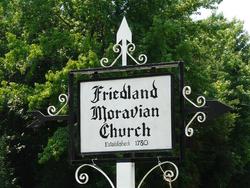Orange County-Review, March 28, 2014
By Kerry Sipe
A six-month-old infant who died before the American Revolution has been the subject of a multi-state mystery involving a tombstone found 250 miles from the grave it was intended to mark.
The lost tombstone will soon be returned to its proper place after an official of the Town of Culpeper presented it to trustees of the Germanna Foundation at a brief ceremony March 21 in Locust Grove.
A clean-up crew discovered the child’s grave marker Dec. 19 near the Southridge subdivision in Culpeper. The stone is engraved “No. 2, Johanes Walk, nat (born) 4 Mar def (deceased) 13 Nov 1769.”
Representatives of the neighborhood’s homeowners association notified Lee Langston-Harrison, director of the Museum of Culpeper History, of their discovery, and she turned to the Germanna Foundation for help.
The Germanna Foundation, whose purpose is to honor the heritage of Virginia’s first settlement of German colonists in what is now northern Orange County, researched the marker and found the dates exactly match those of the infant son of Martin and Elizabeth Fiscus Walk and the great-grandson of Hans Michael Clore of Gemmingen, Baden-Wuertemberg, Germany, one of the original settlers in the 1717 colony.
“Johanes Walk lived only for a few months,” said foundation President Marc Wheat, “but we remember him.” Wheat said the child is related to nearly half the members of the Germanna Foundation.
 Baby Walk is buried in the Friedberg Moravian God’s Acre Cemetery in Friedberg, N.C., near Winston-Salem. A replacement stone with more modern engraving marks the grave.
Baby Walk is buried in the Friedberg Moravian God’s Acre Cemetery in Friedberg, N.C., near Winston-Salem. A replacement stone with more modern engraving marks the grave.
The mystery of how the tombstone came to be in Culpeper was solved last week when The Culpeper Star-Exponent received a call from a man in Arizona who said he had purchased the stone more than 30 years ago from an antique store in Fredericksburg.
James Lee Lloyd, who moved to Arizona from Culpeper last year, said he had abandoned the stone in a wooded area near his former home because he could not transport it.
Jimmy Snyder, historian for Friedberg Moravian Church in North Carolina, said church members would “very much like to have the stone returned” to them. He said it would likely be placed in a museum of artifacts from the church’s 250-year history.
Snyder said he doesn’t know when the original stone went missing or when it was replaced by the newer stone, but he feels sure that church records will shed light on that history when he has time to comb church archives for clues.
Already, however, another small mystery has surfaced: Snyder said he can’t explain the “No. 2” engraved on the stone, because he knows that Johanes Walk was the third, not the second, grave in the old cemetery.
It was customary at the time, he said, for gravesites to be numbered, according to the order in which they were used.
The first grave in the cemtery, he said, was that of Peter Frey, who died in 1766. Another infant was buried there in early 1769 and the Walk child was third, he said.
Snyder said it is a tenet of the Moravian faith that all people are equal in the eyes of God, even in death. For that reason, he said, every stone in a God’s Acre is a recumbent stone with roughly the same proportions so that no one person stands out.
Jim Hoy, director of public works for Culpeper, who delivered the stone to the Germanna Foundation visitors’ center in Orange, described the events of the past few months as “a miniature version of ‘History Detectives,’” referring to the PBS television series in which historical mysteries are investigated.
“I think what it illustrates is you don’t know where you’ll find history,” he said. “We’re very grateful to be able to be a part of returning the stone to its rightful place.”
Wheat, the Germanna Foundation president, said the saga of Johanes Walk’s tombstone “shows the value of a very well-connected network of Germanna descendants.
“There is this 300-year memory of being from this area, and we try to keep track of one another and their welfare,” he said.
